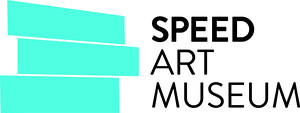FOREVER AND EVER
November 11, 2017–March 2, 2018
2035 South Third Street
Louisville, Kentucky 40208
United States of America
Hours: Wednesday–Saturday 10am–5pm
T +1 502 634 2700
F +1 502 636 2899
info@speedmuseum.org
The Speed Art Museum presents BRUCE CONNER: FOREVER AND EVER, an exhibition of films and prints by Bruce Conner (1933–2008), an artist known for his innovations in film, assemblage, drawing, painting, photography, printmaking, and collage. Co-curated by Miranda Lash, Curator of Contemporary Art, and Dean Otto, Curator of Film, BRUCE CONNER: FOREVER AND EVER is the Speed’s first exhibition collaboration between its Contemporary Art and Film departments.
This exhibition was organized to celebrate a recent gift from the Conner Family Trust of 21 lithographs to the Speed Art Museum. “These prints reveal an intricate and obsessive practice that crossed over into Conner’s drawings and films from the same period,” said Miranda Lash.
To highlight this remarkable gift and Conner’s role as one of America’s preeminent multidisciplinary artists, the collection of lithographs is complemented by an installation of two recent digital restorations of Conner’s films, THREE SCREEN RAY and A MOVIE, on view in the North Building galleries.
Bruce Conner is known for using found footage, a technique of using discarded film prints of educational films, Hollywood B-movies, cartoons, and stag flicks. “It’s truly inspirational how he took this trove of ‘forgotten’ film and then re-edited this material to music scores,” said Dean Otto. “Conner’s early films inspired the genre of music videos by pairing music with a fast-paced editing of pop culture references.”
Conner’s first film, A MOVIE, 1958 is a masterpiece of found footage films. A trickster who upended Hollywood film’s conventions, Conner combined countdown leaders, flash frames, and the inevitable soaring music of title sequences to create a film that is forever about to start, but refuses to do so. On view at the Speed as a new digital restoration, this twelve-minute film is a landmark of American experimental cinema.
THREE SCREEN RAY, 2006 is an exuberant expanded cinema version of Conner’s COSMIC RAY, 1961 and EVE-RAY-FOREVER, 1965, both re-edited into three side-by-side video projections. For COSMIC RAY, Conner combined images he shot of streaming street-lights and a dance au natural with found elements, such as countdown numbers, flash-frames, and head-and-tail indicators, to produce a rhythmic and energetic film. Conner, who had previously experimented with a multi-channel presentation of this material in 1965, began a painstaking restoration process with his longtime editor, Michelle Silva, in 2005. Conner and Silva digitally remixed existing footage into three synchronized video projections. Set to the catchy melody of Ray Charles’ 1959 hit song “What’d I Say,” the resulting three-screen film resembles a video slot machine come to life.
“The lithographs presented in the exhibition are derived from drawings Conner created with felt-tip pens, which were a new technology in the 1960s,” said Lash. “The pens allowed Conner to draw single lines for hours without requiring that he take pen off the paper to return to an inkwell. The result was pages of tight, intricate patterned fields that churn with a sense of motion.” Some of these prints invoke book pages or folios, while others include shapes and designs based on Hindu or Buddhist mandalas.
The exhibition also includes the display of Conner’s volumes of etchings entitled DENNIS HOPPER ONE MAN SHOW, 1971–73. In the late 1950s Conner created a series of collages using fragments of nineteenth-century engraved illustrations. Fashioned in the style of the surrealist artist, Max Ernst, these collages capture a surreal, hallucinatory universe populated by images of flora and fauna, machine parts, and disembodied figures. Challenging the traditional notion of authorship, Conner attributed these collages to his friend and fellow Kansas native, the actor Dennis Hopper. In 1967, Conner proposed exhibiting these collages at a Los Angeles art gallery under the attribution of Dennis Hopper. Conner’s proposal was rejected by the gallery owner and his vision was not realized until the early 1970s, when he translated these collages into photo-etchings, published by Crown Point Press in Oakland, California.
Support for the Speed Art Museum’s exhibition season is provided by Delta Dental and Dinsmore.
Additional support for BRUCE CONNER: FOREVER AND EVER is provided by Owsley Brown III.


